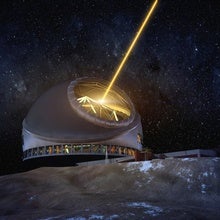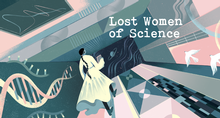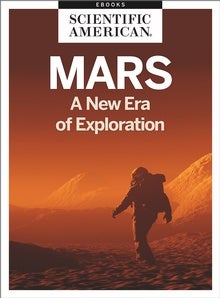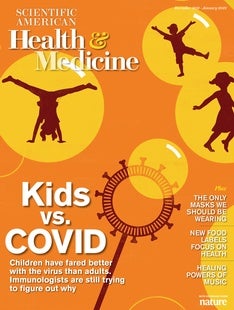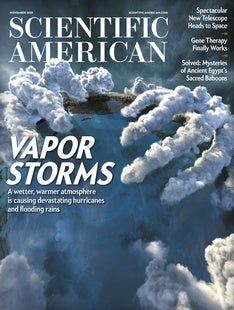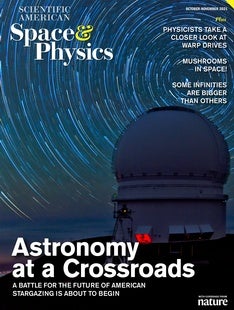 |
| November 11, 2021 |
Dear Reader,
This week, messaging is on our minds. Specifically, how astrobiologists might seek to control the message if—or, more optimistically, when—they finally find and announce evidence for life beyond Earth. Our lead story details a new proposed framework for gauging and communicating just how high public confidence should be for any given discovery claim, whether from a robotic rover on Mars or a space telescope gazing at a faraway exoplanet. Elsewhere, we have stories on a glut of gravitational-wave detections, the polar irrelevance of daylight savings time, a new podcast series focused on "the lost women of science" and more. Enjoy! |
| |
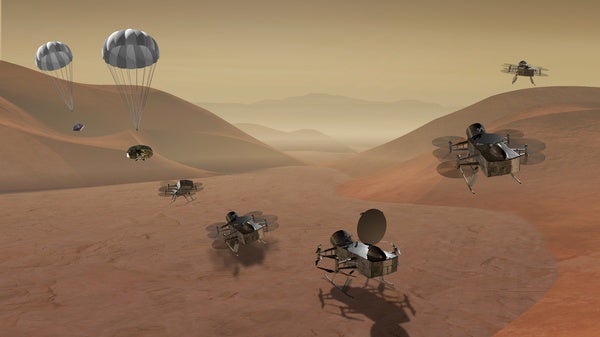 |
| |
| |
| |
| |
| |
| Can Sterile Neutrinos Exist? Physicists have wondered if neutrino particles come in a mysterious fourth variety. Now new experimental findings complicate the question | | | | |
| |
| |
FROM THE STORE
 | | Mars: A New Era of Exploration Was there ever life on Mars? Could life exist there? The latest of nearly 50 missions, NASA's Mars Perseverance Rover is the opening shot of an ambitious plan to find answers. In this eBook, we look at the Red Planet: what we've learned from past rovers, the challenges of space travel and searching for life, proposals for how to make Mars livable and how Perseverance could change everything we know for decades to come. |  | | |
| |
| |
FROM THE ARCHIVE
 | | | |
LATEST ISSUES
 |
| |
| Questions? Comments?  | |
| Download the Scientific American App |
| |
| |





